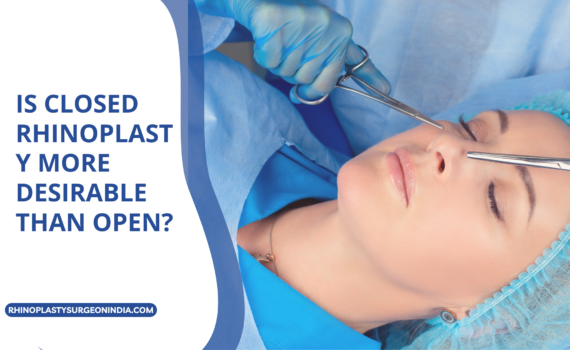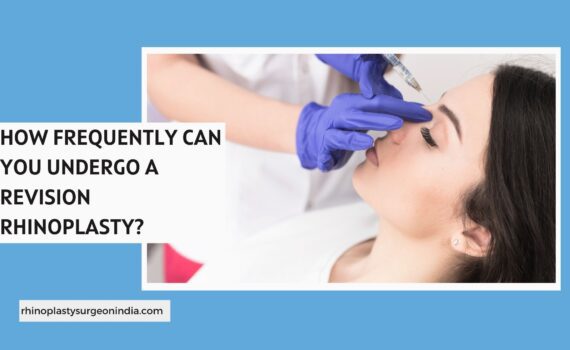
What type of nose is considered as Perfect Indian Nose?
The small and unassuming nose is an organ that plays a vital role in the perception of the beauty of the face. Different cultures and nationalities have noticeable differences in the structure and appearance of the nose. Your nose can tell much about your origins, i.e., your ancestors and ethnicity. This is because of the weather conditions, the type of work, and even the eating habits. People with wider noses usually come from humid and warm climates, and those in cold areas have narrow noses. The nose also plays a vital role in controlling body temperature. Narrow noses make it possible for inhaled air to be warmer. The race classifies the nose shape. Africans have predominantly flat noses (platyrrhine), Caucasians have narrow noses, and Asians have mesorrhine noses.
Indians have a wider set of eyes, and the mid-face is smaller and generally have small noses with high tip rotation (morphine noses), small ears, and a larger mouth. Indians have thick nasal skin, a sloping nasal structure, and a high nasal bridge. The nose measurements with the body’s proportion are essential when planning a cosmetic or aesthetic rhinoplasty. Indian nose is different from other populations, so surgeons need to modify the surgery techniques to match the ideal nose. India is a vast country, and the shape and size of the nose also differ by the region that people live in. For example
- People residing in north India have long and narrow noses
- South Indians have broader noses
- People in Himalayan regions have narrow nostrils and short noses
The nasal analysis is the most crucial step in nose surgery. Therefore, it is essential to understand how much the nose deviates from the ideal norm to plan a nose surgery with a favorable result that blends harmoniously with other facial features. In the past, best rhinoplasty surgeon in india used to follow one set pattern and created only one ideal shape. Still, a modern nose job is tailored to give a great result to people of oriental ethnicity and Indian ethnicity even rigid the facial structures of the two are entirely different.
Features that make a perfect Indian nose
Many of us often look in the mirror and wonder if our nose is crooked nose, too big, too short, etc. So, what is an ideal nose? Ideally, the nose should be in perfect proportion to the face i.e., it should not look ‘out of place’ or overshadow other facial features. Generally, 104-108 degrees orientation is considered ideal for the nose.
It is a proven fact that humans are naturally attracted to symmetry. We naturally gravitate towards ideas or other people who have balanced proportions. When it comes to calculating facial symmetry, it is done in many ways
- it is calculated by dividing the nose into three parts horizontally. The forehead to eyebrows is the first upper third, the eyebrows to the bottom of the nose is the middle third, and the lower third is the bottom of the nose to the chin.
- When you look at it vertically, ideally, the nose should be perfectly in the middle third of the face.
- If you look from the side view, the ideal nose’s parameters are that the side length should be equal to the width of the nose in the side view.
- When using the rule of fifths, the ideal nose is when the nasal width equals the width of the person’s eyes.
- One more way of measurement is looking from under the nose. A triangle should form with the area inside the nostrils (vestibules) making up two-thirds of the triangle.
The definition of the perfect nose is individualistic. Some features might be considered ideal. Rhinoplasty is one of the most popular plastic and cosmetic surgeries worldwide; its outcome depends on the surgeon’s knowledge of nose proportions from different ethnicities.
Features of a Perfect Indian Nose
The nose plays a large part in defining the shape of your face. In all cultures, an ideal primary nose is
- when the wideness of the nose comes in a fifth of the face
- Draw two imaginary vertical lines from the corner of your eyes and check if the nose’s width falls between those two lines.
Most rhinoplasty surgeons take the help of Fibonacci’s sequence to calculate the width and height of the nose for a face. The golden ratio is the standard when altering the nose shape through rhinoplasty to enhance one’s natural beauty. The perfect nose
- is in proportion with the rest of the facial features
- has a smooth profile
- has a smaller tip
- has symmetrical nostrils
- is straight
Nose features that are not considered to be perfect or ideal
Noses are categorized into different nose types, but there are some features that are not regarded as perfect, such as
- bump or the dorsal hump on the nose
- wide nose
- a nose that bulges out from the rest of the face
- bulbous nose tip
- large and wide nostrils
Indian nose rhinoplasty
Indian rhinoplasty is a specific rhinoplasty that demands expert knowledge and technique from the doctor. Since it is a type of ethnic rhinoplasty, the rhinoplasty surgeon has to ensure that the organ’s ethnicity is maintained while still making natural-looking improvements in the shape and function of the nose. Here are some standard features of the Indian nose that make Indian rhinoplasty a specialization on its own
- Indian noses have a thicker skin layer. Thus, any alterations in the bone and cartilage need to be foredefinite to show through the thick overlayer of the skin. Conservative alterations do not give the desired new shape.
- Drooping tip. A ptotic nasal tip in the side profile characterizes Indian noses. This makes the Indian nose appear longer, and the face look aged.
- Dorsal hump. This is also a joint deformity in the Indian nose. A bump on the nose makes the look longer than desired, and combined with the droopy tip it makes the overall appearance of the nose even more elongated.
Rhinoplasty for the Indian nose can be done in an open or closed method. This depends on the type of reconstruction the doctor is aiming for.
Are you a good candidate for Indian rhinoplasty?
Any healthy male or female is a good candidate for Indian rhinoplasty. Also
- If you are past your teens, then you can opt for rhinoplasty
- If you do not smoke or are willing to give up smoking for a long time
- You are of Indian descent and have a concern about the appearance and structure of your nose
- You have realistic goals
India is one of the top five countries with a maximum number of rhinoplasties performed in a year with a more than 97% success rate.
What to expect in an Indian Rhinoplasty surgery?
Rhinoplasty can be done in two ways.
- Liquid rhinoplasty uses filler and threads to contour the shape of the nose. The fillers and treads are used to correct the tip orientation and reduce the bump on the nose. The results of this type of rhinoplasty last for 18-24 months.
- Surgical nose job: A surgical nose job is done under general anesthesia. Since every nose has an individual characteristic, every rhinoplasty is tailored so that the final appearance is harmonious with the rest of the face and still maintains the unique ethnic identity. The surgeon will discuss the detailed plan with you before the surgery and discuss the implants or grafts needed to define the nose. A surgical nose job takes about 2-3 hours to complete, and the results are more or less permanent.
Indian Rhinoplasty cost
Since the perfect Indian nose has some distinct features and the results can be life-altering, it is essential to choose a qualified plastic or cosmetic surgeon over the surgery cost to get the desired results. The cost of an Indian nose job includes fees of the specialist, the surgical costs, hospital, and other allied charges. The price of Indian nose rhinoplasty varies with the nature and type of the procedure. Cosmetic rhinoplasties are not covered by insurance costs, whereas functional rhinoplasties are covered by insurance.






